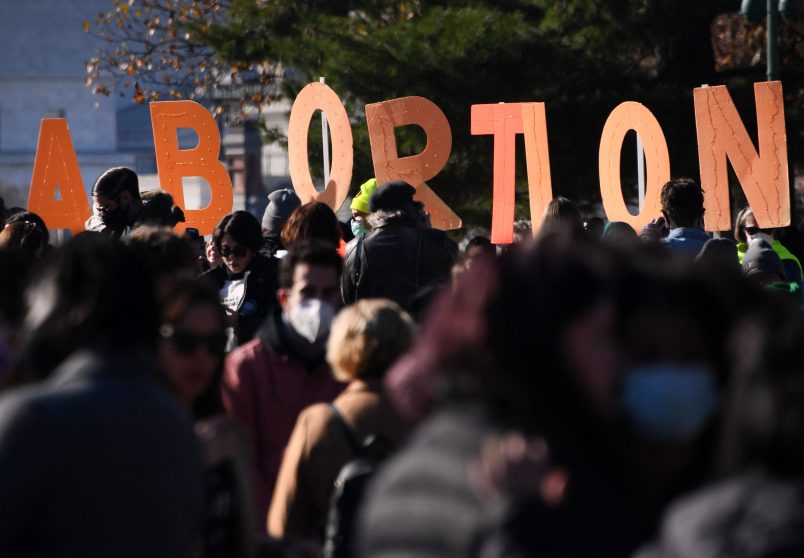I’ve been working on a column about abortion politics. And as part of pulling that together, I’ve been sifting through recent polling data, especially surveys taken after the release of the Alito draft opinion. As is often the case, polling data on abortion can seem scattered and inconsistent, in large part because responses turn so closely on subtle differences in wording and framing. I’ll get to that in a moment. But looking at all these numbers really confirmed me in thinking that this is a powerful midterm issue for Democrats but … it won’t activate itself. It’s going to take specific actions to activate it for its full potential.
My other big takeaway is that success in putting Roe at the center of the midterms depends heavily on approaching it as preserving the status quo. It’s not just about having majority support. It’s about putting together the kind of decisive numbers that shift a lot of elections. A Roe law would actually be a quintessentially small-c conservative act, in the best sense of the word: taking legislative action to preserve the bundle of rights and protections that the vast majority of Americans have lived under their whole adult lives. As a guy in his early 50s with two teenage sons, I recognize that I’m low on the list of who is most immediately affected by what the Court is about to do. So it’s not for me to say what’s important to have in such a bill. But my read of the politics is that a Democratic majority in 2023 that can quickly codify Roe is really in reach, though it’s certainly a challenge. And framing the push and approaching it as preserving the status quo greatly increases the chances of success.
Let’s get to what the numbers tell us.
They say quite consistently that just under 70% of Americans oppose overturning Roe and just under 60% (some polls show this several points higher) support passing a law to make the Roe protections into federal law. These are really decisive numbers and the highest, from what I can tell, is the most recent: a poll just released by The Wall Street Journal. These polls also clearly suggest that, contrary to what used to be the case, pro-Roe voters are significantly more likely to vote on the issue than anti-Roe voters. That’s not surprising. Pro-lifers think they’ve won. And they have good reason to think that. So they’re less focused.
But here are some numbers that really jumped out at me. On its face it might seem obvious that people who support Roe call themselves pro-choice and those who oppose it call themselves pro-life. But if you’re familiar with abortion polling you know that’s not the case. The pro-choice identification runs significantly behind those who want Roe to stay the law. But a just released Gallup poll shows that net support for “pro-choice” over “pro-life” has gone from +2 to +16 just over the last 12 months. 55% identifying as pro-choice is the highest its been since it briefly hit 56% in 1996.
Even more striking is this number from the Journal poll. One of the questions the poll asked was under what conditions abortion was acceptable. 57% of respondents chose when the “woman wants [an abortion] for any reason.” To give you some perspective, as recently as 2016 the number was 44%. And as recently as 2006 that number was 38%. Even in 2018 that number was 49%. This is a huge, huge shift. Probably better than anything else it shows how dramatically different American law is about to be from public opinion.
This chart from the Journal article captures the trend. The “any reason” question is the beige on at the very bottom.

I suspect that dramatic upward shift is one part societal change and one part that the imminent overturning of Roe concentrates the attention. Regardless, it’s a dramatic shift and I think it’s consistent with what Gallup picked up with the high rate of identification as “pro-choice.”






